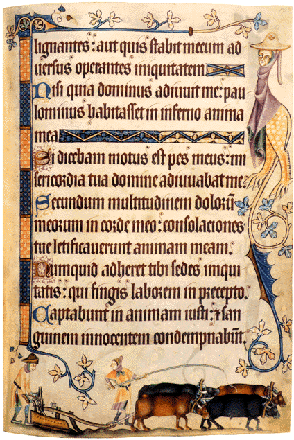
Minim (palaeography)
Encyclopedia

Palaeography
Palaeography, also spelt paleography is the study of ancient writing. Included in the discipline is the practice of deciphering, reading, and dating historical manuscripts, and the cultural context of writing, including the methods with which writing and books were produced, and the history of...
, a minim is a short, vertical stroke used in handwriting. The word is derived from the Latin
Latin
Latin is an Italic language originally spoken in Latium and Ancient Rome. It, along with most European languages, is a descendant of the ancient Proto-Indo-European language. Although it is considered a dead language, a number of scholars and members of the Christian clergy speak it fluently, and...
minimum, meaning "least" or "smallest".
A minim is the basic stroke for the letters i, m, n, and u in uncial
Uncial
Uncial is a majuscule script commonly used from the 3rd to 8th centuries AD by Latin and Greek scribes. Uncial letters are written in either Greek, Latin, or Gothic.-Development:...
script and later scripts deriving from it. Parts of other letters are based on minims as well: when a minim is extended above the line, it becomes an ascender, as in the letters d and b, and when it is extended below the line, it becomes a descender
Descender
In typography, a descender is the portion of a letter that extends below the baseline of a font. The line that descenders reach down to is known as the beard line....
, as in the letters p and q. It is a stem when it forms only part of a letter, such as r.
Minims often have a connecting stroke which makes it clear that they form an m, n, etc.; however, in Gothic
Blackletter
Blackletter, also known as Gothic script, Gothic minuscule, or Textura, was a script used throughout Western Europe from approximately 1150 to well into the 17th century. It continued to be used for the German language until the 20th century. Fraktur is a notable script of this type, and sometimes...
scripts, also known as textualis especially in late examples, minims do not connect to each other at all and it is nearly impossible to tell what letter is meant. A 14th century example of this is: mimi numinum niuium minimi munium nimium uini muniminum imminui uiui minimum uolunt ("the smallest mimes of the gods of snow do not wish at all in their life that the great duty of the defences of the wine be diminished"). In Gothic script this would look like a series of single strokes (this problem eventually led to a dotted i and a separate letter j).
The problem was also sometimes solved in other ways in some languages. In Middle English
Middle English
Middle English is the stage in the history of the English language during the High and Late Middle Ages, or roughly during the four centuries between the late 11th and the late 15th century....
, it has been suggested that the development of certain historically "wrong" spelling conventions (e.g. love for earlier luve, woman for earlier wimman) was motivated by the need to avoid long minim clusters.
Gothic minims may have various decorations (essentially serif
Serif
In typography, serifs are semi-structural details on the ends of some of the strokes that make up letters and symbols. A typeface with serifs is called a serif typeface . A typeface without serifs is called sans serif or sans-serif, from the French sans, meaning “without”...
s), from a simple initial headstroke, to large diamond-shaped finials at the top and bottom, such as in textualis quadrata, the most decorated form of Gothic. Textualis sine pedibus, literally "textualis without feet", has minims with no finials at all, while textualis rotunda has round finials.

